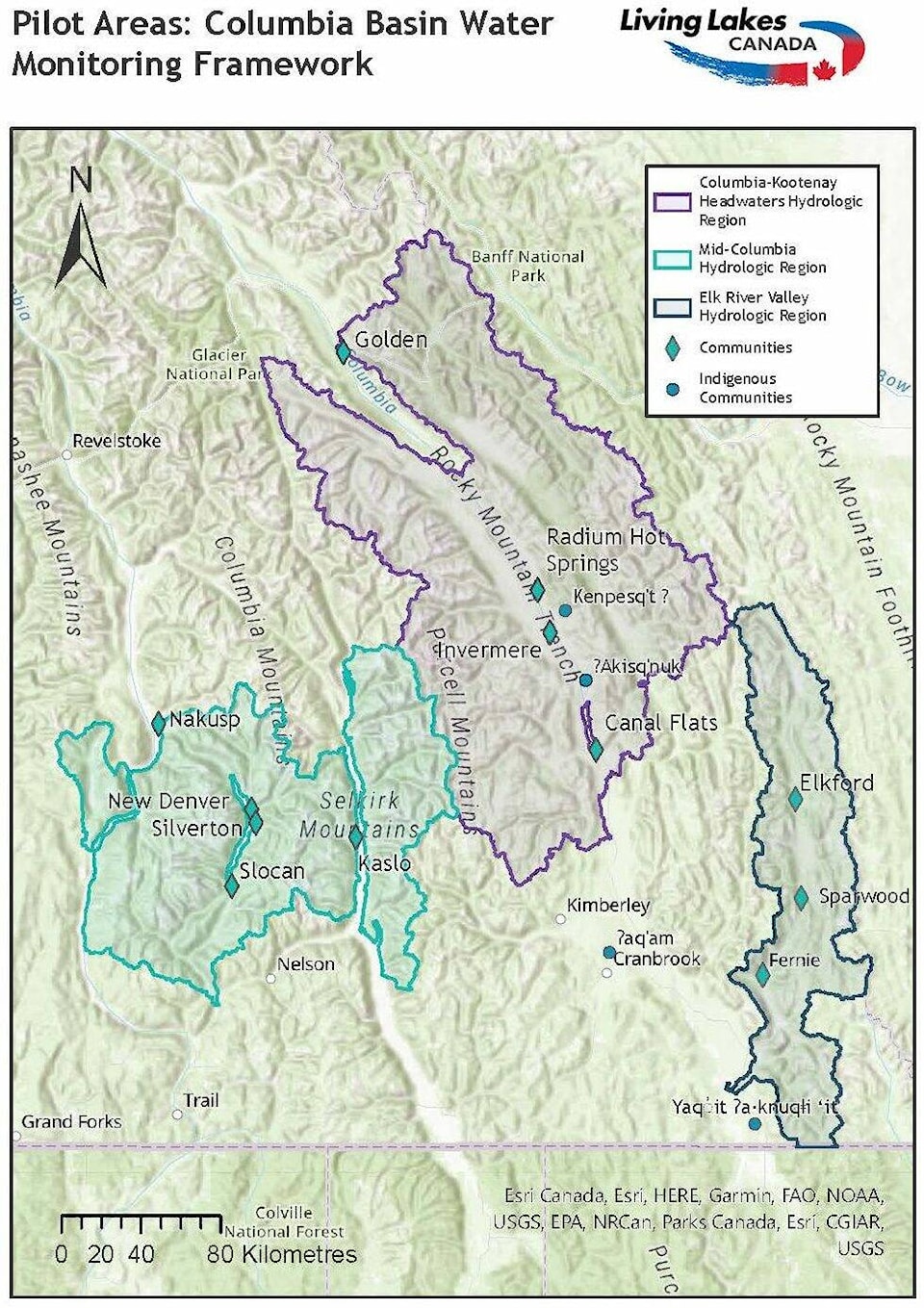The Canadian Columbia Basin, which supplies fresh water to millions of people in Canada and the United States, is under threat due to climate change, according to Living Lakes Canada (LLC).
LLC is a registered charity affiliated with the German Global Nature Fund’s Living Lakes International, a global network of organizations that work to enhance, protect, restore and rehabilitate freshwater areas around the globe.
READ MORE: $1 million for water monitoring in Columbia Basin
“As impacts of heat waves, long periods of drought, out-of-control wildfires, low flows in rivers and streams, and receding glaciers compound year after year, the water security that humans and ecosystems rely on in this region is coming under threat,” LLC said in an October press release.
LLC is now working to build a network of water and climate monitoring stations around the Basin, in order to garner more information with the fresh water to allow communities to better prepare for change.
These new stations will collect information that will help LLC address data gaps in government-run networks, which they say have seen a decline in monitoring stations in recent decades.
In the project’s pilot year in 2022, LLC installed monitoring stations in three regions of the Columbia Basin, to analyze water quantity, lake level and climate.
Since fall 2022, 12 more monitoring sites in the Columbia-Kootenay Headwaters (CKH) and 14 new sites in the Mid-Columbia Kootenay region (MCK) have been collecting data. In this first year of data collection, LLC said this program has already gained a better understanding of how surface level climate events are impacting important freshwater sources and waterways.
Throughout the CKH, LLC said that lower-than-average snowpacks followed by above-average spring temperatures made for an “alarmingly-early spring melt.”
After a rainy period from late May to early June that maintained the surface water levels, a prolonged dry period moved into the CKH region in mid-June, that led to a continued decline of surface water.
“The streams in the CKH region that are dependent on glacial melt, such as Delphine Creek, were also greatly impacted by this year’s climate extremes,” LLC said.
“As glaciers melt, water travels beneath the glacier and collects fine glacial sediment. This is what makes mountain rivers and streams cloudy, or turbid. Extreme turbidity and high flows observed at Delphine Creek in July demonstrate the volume of glacial meltwater impacting the creek.”
The MCK region also had lower-than-average snowpacks and then above-average spring temperatures. This led to an early spring melt and snow-free conditions a month ahead of what is typically reported.
This early melt was recorded by LLC’s hydrometric stations on MacDonald, Caribou, Silverton, Upper Wilson and Fitzstubbs creeks. This region also then saw lower-than-average spring precipitation followed by a continued decline in flow for many streams during hot, dry summer months.
READ MORE: Living Lakes seeking public input on water concerns in East Kootenay
Citing the International Kootenay Lake Board of Control, the LLC said that Kootenay Lake water levels peaked a full month earlier than historically reported.
“As glaciers in the Columbia Basin continue to recede and disappear, continued monitoring will allow us to track the changing contributions from glacially-fed streams to water systems,” LLC said. “This information can be used to model other nearby basins that contain glaciers, many of which are important water sources for local residents.”
You can read a summary of the year-one data in the CKH and MCK regions at livinglakescanada.ca/cbwmf and a full report of the first year of data will be released in early 2024. Any questions about the project can be sent to CBWMF program manager Paige Thurston at paige@livinglakescanada.ca
paul.rodgers@kimberleybulletin
Like us on Facebook and follow us on Twitter
